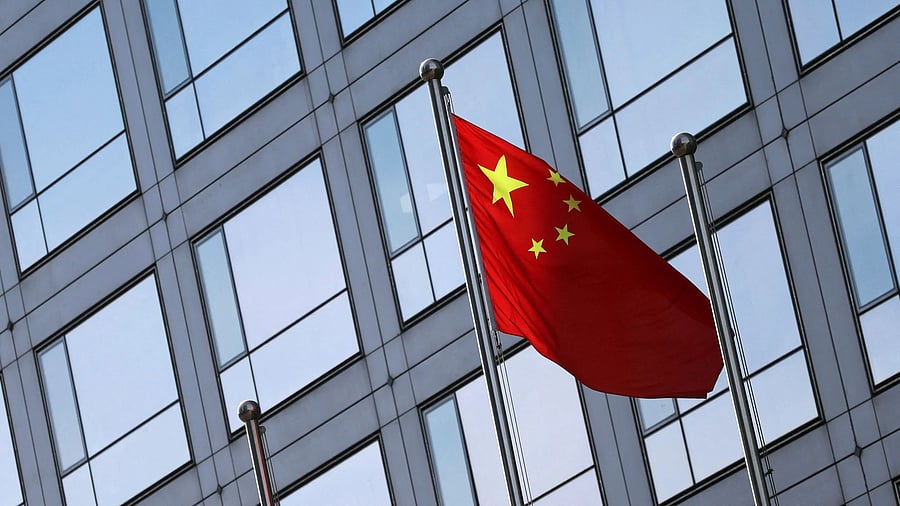
China flag
Credit: Reuters photo
On October 9, the Chinese Ministry of Commerce announced a set of new export controls related to rare earth elements. They also included restrictions on rare earth processing technologies, related to mining, smelting, separation, recycling, and utilisation. Such export controls and restrictions are not unprecedented, and have been announced earlier by Beijing. However, they are the most severe given their expanse and subsequent checks and balances. These restrictions will take effect on November 8, before the truce with the US ends.
By announcing these restrictions, China has sent a clear message to the US and its allies that it will not hesitate to weaponise its dominance in the rare earth supply chain if pushed to the wall. Three primary considerations drive the rationale behind curbing rare earth exports: disrupting US industrial supply chains, gaining the upper hand in trade negotiations, and strategic signalling to the US and its allies, Europe, Korea, and Japan. China has doubled down on the licence regime to strengthen these controls further, asking all companies to share granular information, including customer details, manufacturing diagrams, pictures with mineral placements, and annual production data. Additionally, for the first time, China has refined the ‘de-minims rule’, implementing the extraterritorial application of export controls, warning countries against violating rare earth export rules.
While some experts will interpret Beijing’s actions as mere political signalling, the case is bigger. Chinese export controls have now become a part of its foreign policy calculations, a weapon that emerges when Beijing feels threatened. Therefore, given their importance for US industries, Beijing has used the tool tactfully, similar to how it weaponised the export of strategic items such as construction machinery to India.
These restrictions have impacted major US manufacturing sectors, particularly automobiles and clean energy, which consume a lot of minerals. One sector that has been hit hard is its defence manufacturing. Additionally, post-December, Beijing is expected to reject licences for defence firms. We have already seen exports to the US decline by 27% year on year this September.
In the face of increasing restrictions on minerals and their processing technologies, the US has reacted swiftly. The Trump administration’s strategy to counter Beijing’s action is based on two critical pillars: ensuring optimal utilisation of domestic reserves for industries, and forging a mineral security partnership with allies and partners.
Some of the deals sealed by the US government recently underline its serious commitment to enhancing mineral security. The $400 million strategic investment in MP Materials, $35 million investment in Trilogy Metals Inc., and $435 million investment in Lithium Americas are a few examples that point to the administration’s efforts at encouraging domestic manufacturing. Besides, the US has also finalised deals with resource-rich countries, including Australia and Malaysia. While these efforts, supported by a backstop agreement and floor commitment for ten years, are vital, they alone cannot yet produce rare earths at scale and competitive prices. Additionally, the process will remain costly, unsustainable, and at the mercy of Beijing’s whims and fancies.
Dialogue and diplomacy
Besides, US efforts at forging a strategic partnership with a country like Malaysia are already facing stiff competition from Beijing. Here, China is also playing a smart strategy. To develop a rare earth ecosystem, it has extended support to establish an alternative ecosystem undercutting the efforts of the US and its allies, such as Australia. For this, Beijing has reached out to countries like Malaysia, which has 16.1 million tonnes of rare earth deposits, offering its processing technologies, albeit with conditions. If
the deal is signed, China will have access to Malaysian deposits, safeguarding its processing technology and strategically restricting its competitors’ plans.
Therefore, the US’s diplomatic efforts may secure some respite in the long term, but they would be of little help in fixing the existing bottlenecks. The US’s mercantilist diplomacy further makes any prospects of strategic collaboration to establish a resilient mineral supply chain more challenging. Given the fragmented initiative, Beijing will always be more commanding than the US.
Irrespective of these recent restrictions, China has also clarified that it is “ready to strengthen exchanges and dialogue with all parties on export controls”, leaving room for negotiations. Trump’s upcoming dialogue on the sidelines of the APEC Summit with Xi will show whether the US can get a deal, including one on rare earths. If it happens, it will emphasise China’s win; if not, the US will need to give more.
(The writer is a junior fellow, Indo-Pacific, with the Strategic Studies Programme, Observer Research Foundation)